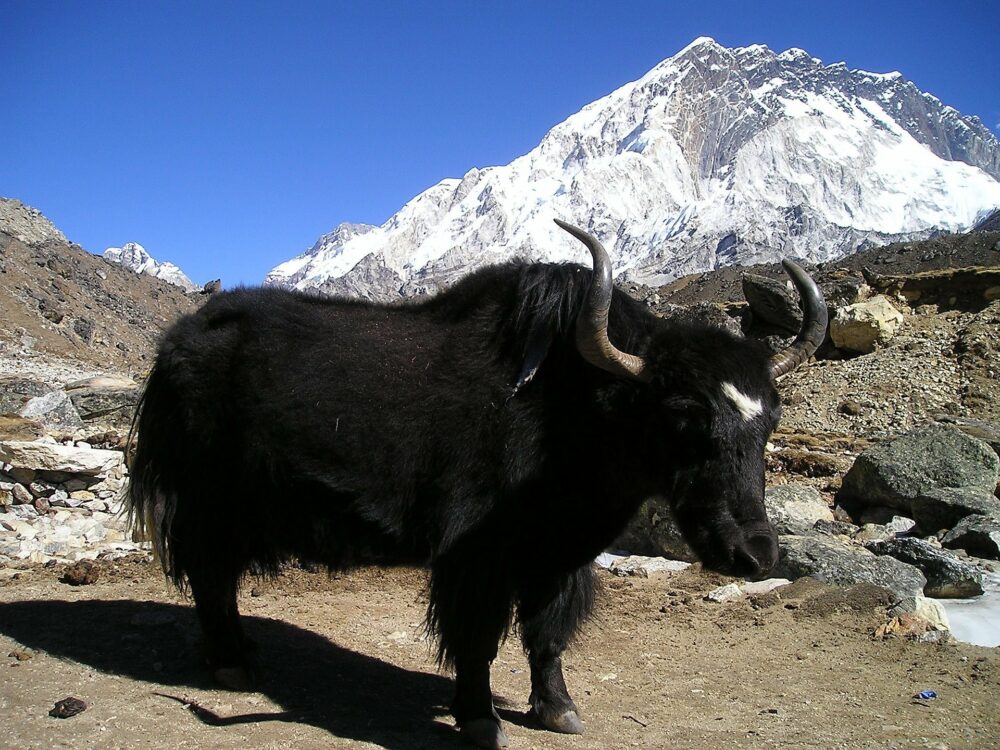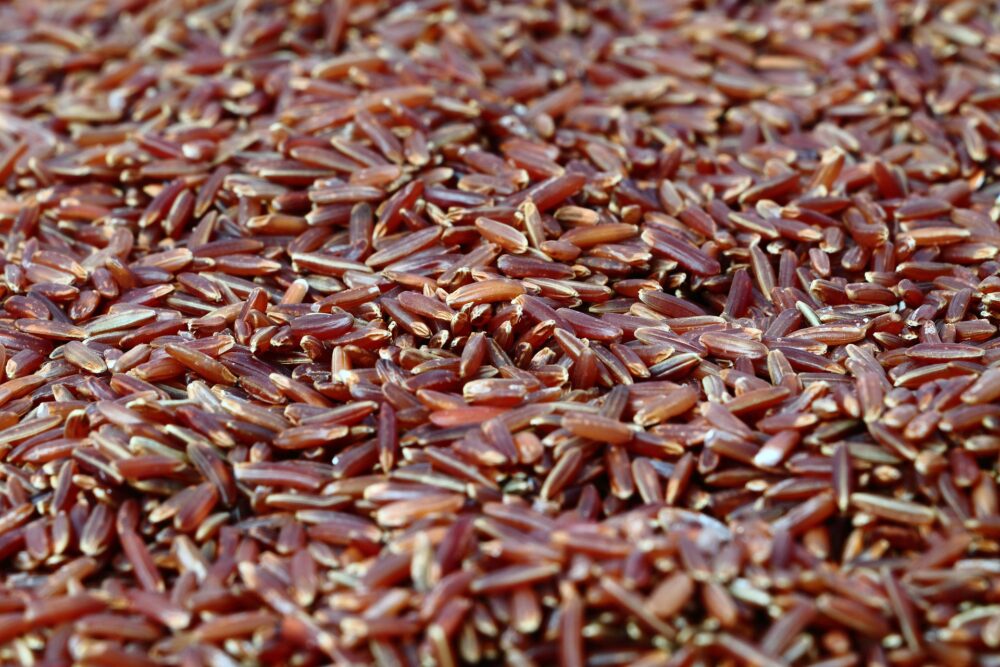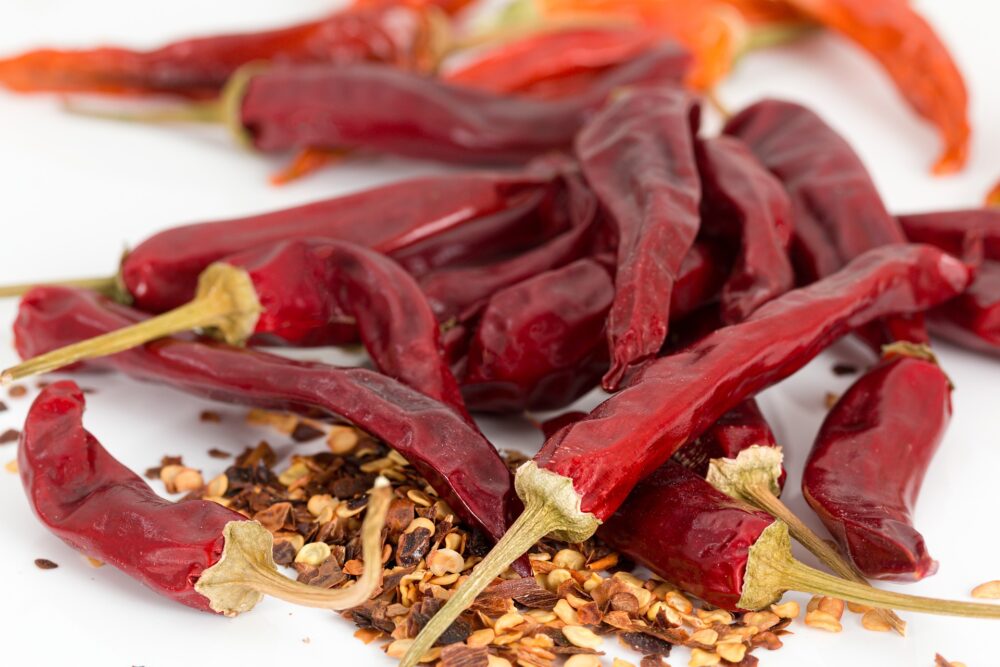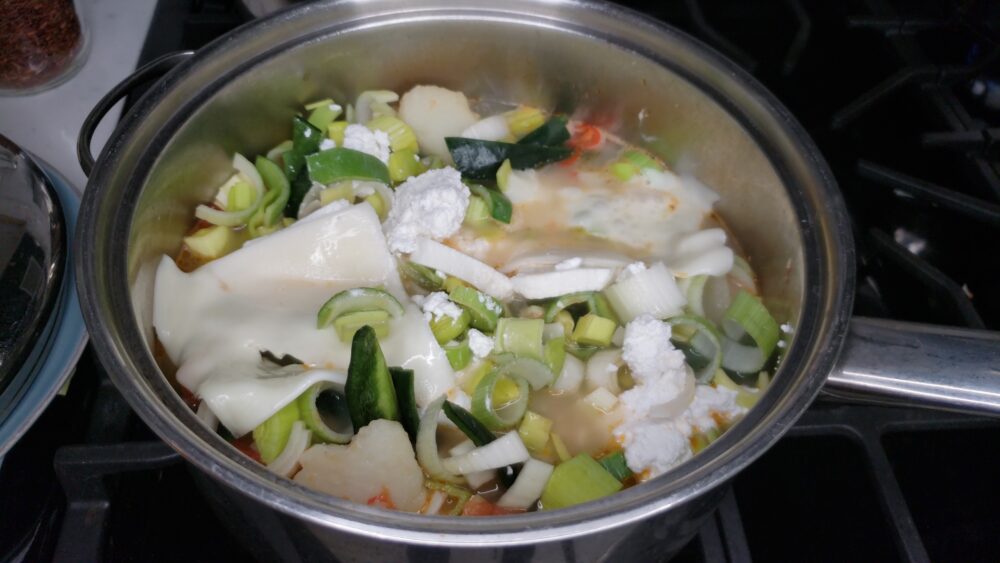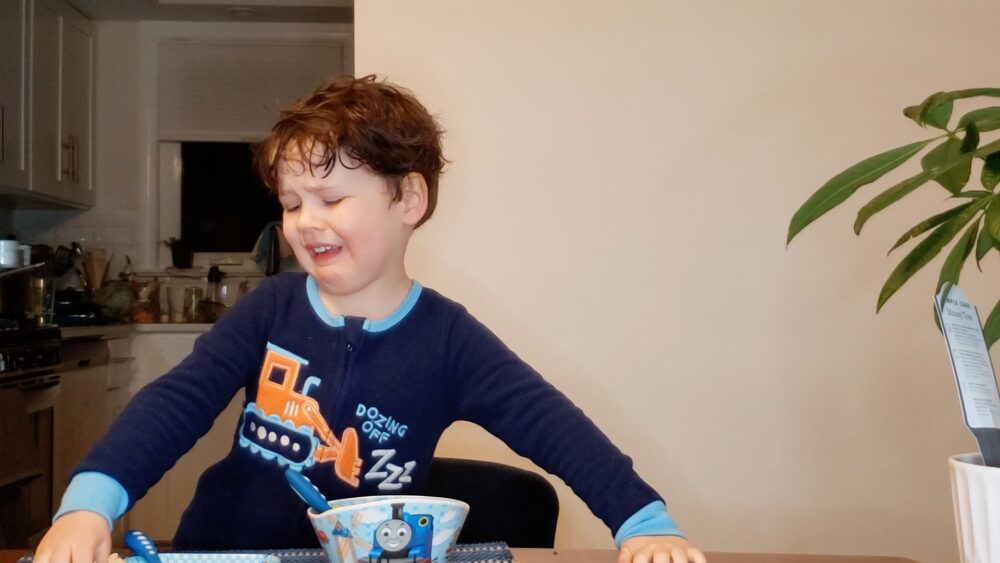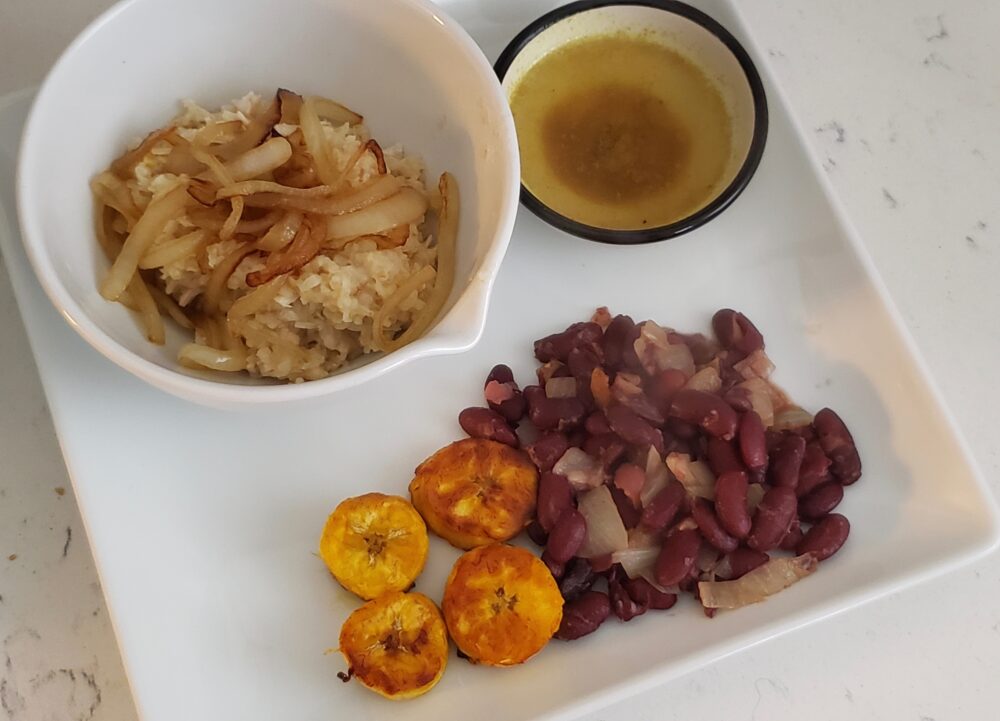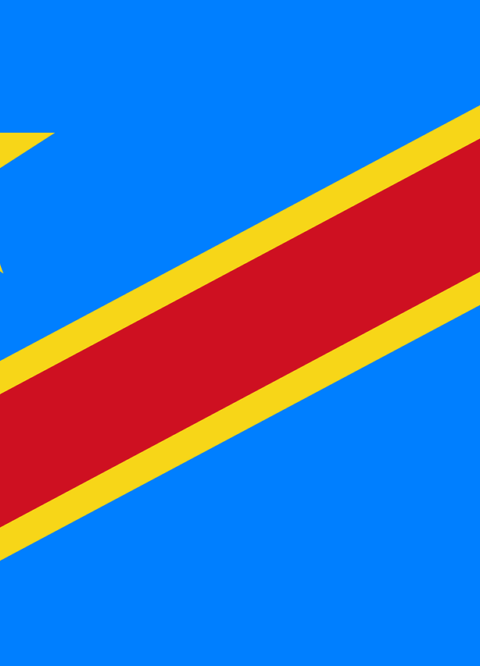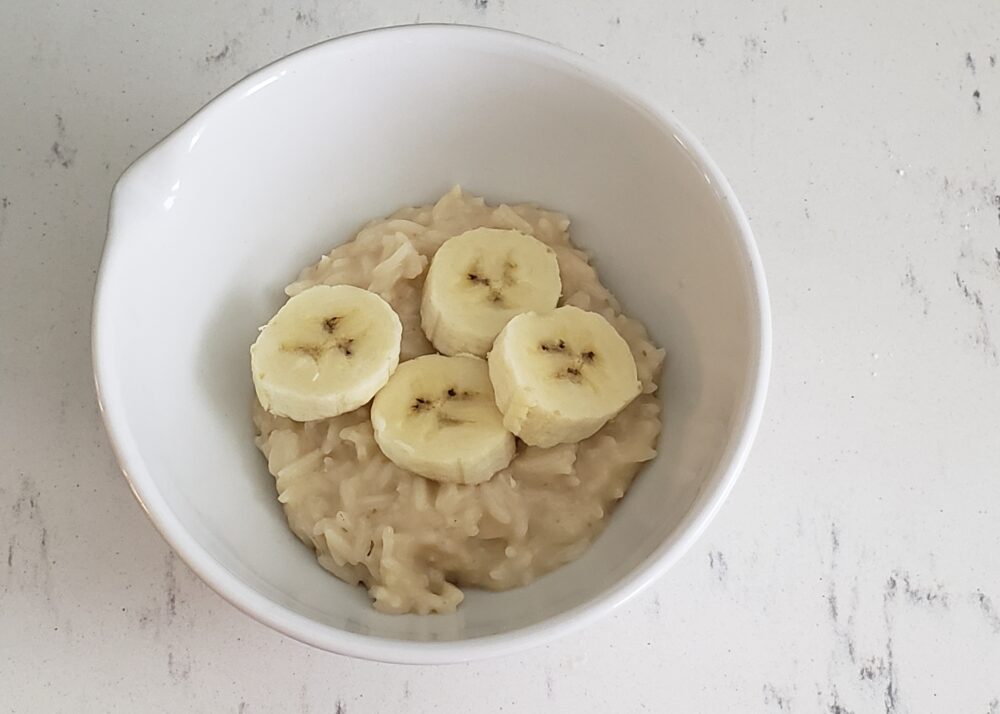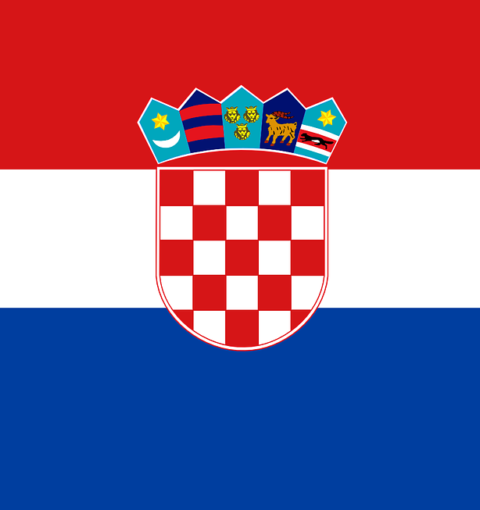One of the things this project has done is made me more aware of countries I had never heard of. Bhutan is definitely one of the more obscure ones. And when I recently dropped it into a conversation, people looked at me like I had two heads.
Ok, so you might not know about Bhutan. But you really really should!
It’s the only carbon neutral country in the world, it is considered the happiest country in the world (they measure their wealth by Gross Domestic Happiness, or GDH rather than GDP), and their favorite things to eat are chili peppers and cheese!! Oh, and the most popular sport is archery.
Now don’t you want to know more about this place?
THE CUISINE

Bhutan is a landlocked country in the Himalayan mountain range and is sandwiched right between India and China. So of course, its cuisine relates to its geography and neighbors. But it is quite distinct.
Since there is no water nearby, fish is not as common as meat and dairy. You might be surprised to see yak on the menu in meat, jerky, butter, and cheese form. But yak is not the only meat they consume. There is plenty of chicken, pork, and beef.
Vegetables and rice are plentiful. More often than white rice, however, you’ll find the very distinct red rice, which is native to this country and has a very smoky earthy quality.
There are also very famous dumplings from this region called momos. I have a friend who used to organize a Momo crawl around Queens to try all the Nepalese and Tibetan dumplings he could find. These are very popular in Bhutan, as well.
Bhutan is also known as “Land of the Thunder Dragons” due to its intense thunder and lightning storms that ancient people may have believed originated from a dragon. Or maybe it’s called that because of the fierce chilies they use in almost every dish. The Bhutanese like it spicy. Really spicy.
According to the Bhutanese, a perfect combination with the chilies peppers is cheese. And yak cheese in combination with chilies makes up their national dish and many variations.
With all these bold flavors and interesting ingredients, no wonder they are so happy!
BHUTANESE FOOD IN NEW YORK
I knew that Woodside, Queens was the area to go to in order to explore Himalayan cuisine. I’ve been to a handful of the great Tibetan and Nepalese restaurants out there. But is Bhutanese represented outside of the region’s momos?
Turns out there is a restaurant called The Weekenders that has an entire section on their menu dedicated to the famous and iconic datshi. And you can enjoy it alongside billiards games. Cheese, peppers, and pool? Sounds like a recipe for a great weekend night!
THE VIDEO
Sam shows off his repertoire of funny faces on the Bhutan video. Don’t miss his impersonation of a yak and his embodiment of thunder dragons!!!
As usual, in between our educational hijinx, we create dinner. Sam was pretty clear from the get go that he was not going to partake of any of the spicy dishes. Instead, he did happily taste the cheese options and give an aromatic breakdown of the Himalayan red rice.
THE DISHES
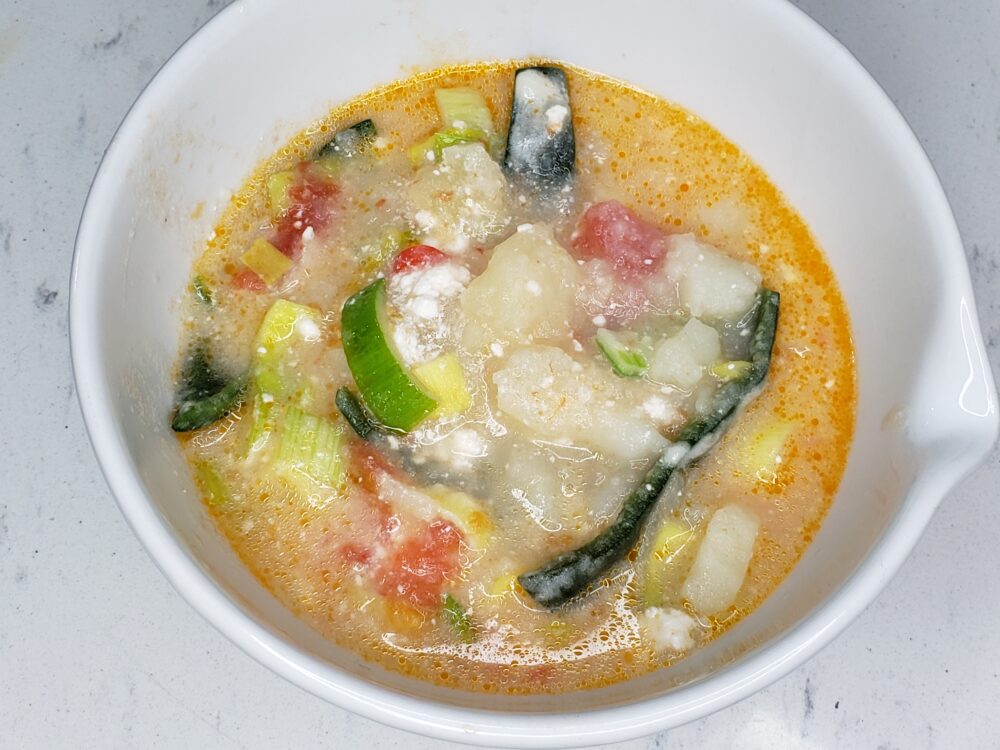
I still had a feeling Sam was going to resist trying the potato and cheese stew. And even though I held back a bit on the peppers, I did want to get in touch with the spice mania from Bhutan. So for Sam and to tame any pain my wife and I might experience, I also decided to make a Bhutanese chicken dish.
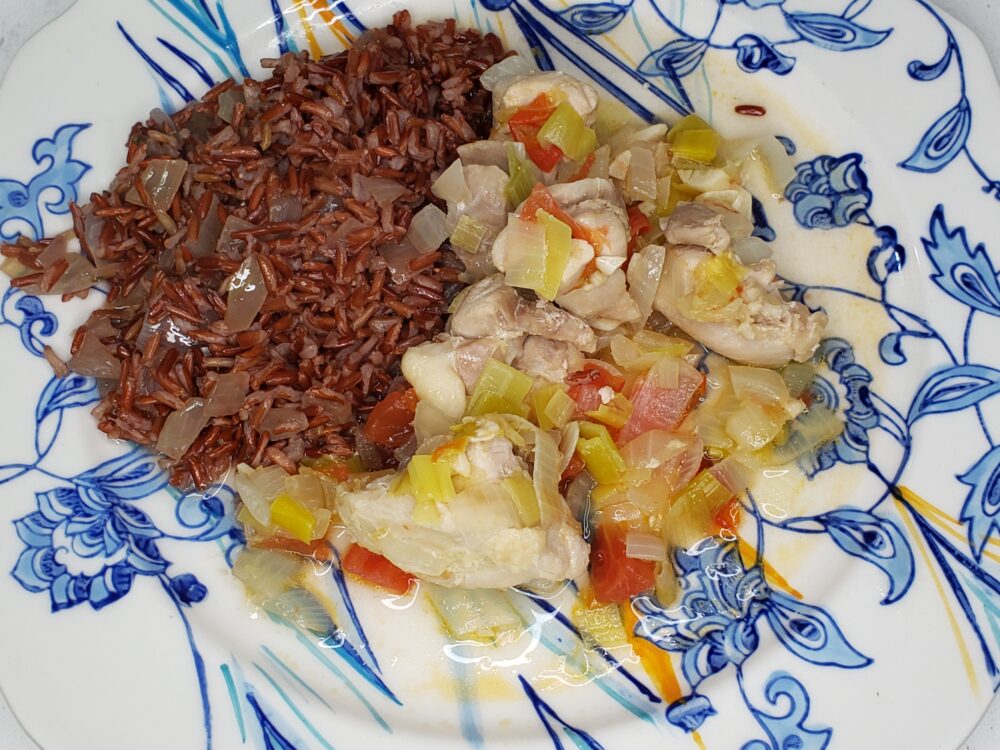
I discovered Jasha Maroo, which used some of the same ingredients I needed for the Kewa Datshi. So thankfully I got plenty of use out of the tomatoes, leeks, and chilies. Another major flavor in Jasha Maroo is ginger and we made an intense paste from plenty of fresh ginger root.
And to pair with both dishes, we had to see if we could get some of that red rice. Thankfully, it is now available in local health food stores. It sure did have a nutty smoky flavor. Sam even told me it smelled like sausage, which is true and incredible for a completely vegan ingredient. Some genius chef needs to figure out how to make mock sausage from this healthy ingredient.
SPECIAL INGREDIENTS
Aside from the red rice (which was surprisingly easy to find), the main challenge was finding substitutes for the Bhutanese ingredients we do not have access to in this country. My biggest challenge was cheese.
Cheeses
The cheese they use in Ema and Kewa Datshi is called chhurpi and is usually made from yak milk and comes in either a soft or hard style cheese.
The soft style is used for these dishes and has a subtle tangy quality and is supposedly similar to cottage or ricotta cheese.

But on further research, neither of those cheeses is a perfect substitute. Some people suggest blue cheese, others suggest American cheese, and others suggest a blending of a few more accessible cheeses.
In order to try to emulate the chhurpi cheese, I picked up some white American cheese slices (this was Sam’s favorite), farmer’s cheese which is similar to ricotta but a little firmer, and Israeli feta. I was searching for Danish feta, which I couldn’t find, but I think you want something more mild and less salty than Greek feta. Israeli feta did the trick.
Kewa Datshi from Bhutan

Literally translating to potato and cheese, this is one of the most popular dishes in Bhutan. A delicious blend of cheese, potatoes, and peppers, this lives in the world of cheese potato soup or potatoes au gratin. But it is as Bhutanese as it gets.
- 4 potatoes
- 3 garlic cloves (sliced)
- 1 tomato (sliced)
- 1 red onion or shallots (sliced)
- 1 tspn vegetable oil
- 1 tbspn butter
- 2-4 green or red chilies (sliced)
- 2 leeks (chopped)
- 1/2 cup shredded cheese (mix of farmer's cheese and Bulgarian feta)
- 3 slices white American cheese
-
Add potatoes, garlic, tomato, onions, and salt to a pot and cover with water (about 2.5 cups) and vegetable oil. Bring to boil.
-
Lower heat and cover. Cook about 15-20 minutes until potatoes are mostly soft.
-
Add chilies, leeks, and butter, and cheese. Cook for another 5 minutes or so until leeks start to soften.
-
Add cheese, gently stir, and turn off the heat.
-
Serve with red rice.
Jasha Maroo with Red Rice
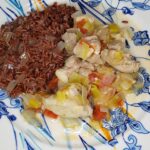
A spicy gingery chicken stew from Bhutan has both Chinese and Indian influence and goes perfectly with the nutty smoky red rice that is indigenous to Bhutam/
Chicken
- 2 pounds chicken thighs (boneless skinless )
- 2 tbspn vegetable oil
- 6 garlic cloves (roughly chopped)
- 1 tbspn ginger (crushed into a paste)
- 3 onions (chopped)
- 1 leek (finely sliced)
- 2 tomatoes (chopped)
- 4-5 green chilies (chopped)
- 2.5 cups chicken broth or water
- salt (to taste)
- cilantro (chopped)
Red Rice
- 2 tbspn butter
- 1 small onion (chopped)
- 1 cup red rice (rinsed and dried)
- 2 cups chicken stock
- 1 bay leaf
- 2 sprigs thyme
- 1/2 tspn salt
Chicken
-
Cut the chicken into slices.
-
Heat oil in pot over medium high. When very hot add garlic. Cook, stirring, until light brown.
-
Add ginger paste and cook for another minute or two until aromatic.
-
Add onions, leeks, and chicken. Season with salt. Cover over high heat amd cook for 5-7 minutes.
-
Add tomatoes and chilies. Cook for another 5 minutes or so.
-
Add chicken broth and bring to boil. Lower heat to simmer and cover.
-
Cook until chicken is done. Add more salt if necessary. Garnish with cilantro.
Red Rice
-
Melt butter in pot and sauté onion on low heat until translucent, about 2-3 minutes. Be sure not to brown.
-
Add rice and stir for about 2 minutes. Mix well with butter but don't toast rice.
-
Add chicken stock, bay leaf, thyme, and salt. Simmer and cover for 20 minutes or until stock is absorbed.
-
Fluff and season if needed.
HOW I SCREWED IT UP

My biggest challenge here is that most of the recipes I found were pretty non-specific. Timing and measurements were rather vague and so I was left to do a fair bit of improvisation. If you put me on stage, I’d do great. But in the kitchen, I’m a little less experienced.
But in the end, both main dishes came out pretty good. If anything, I overcooked the potatoes on the Kewa Datshi. But aside from that, it was pretty easy since both dishes mostly involved putting things in a pot and turning on the heat.
Flavorwise, they were great. Perhaps I could have done with a bit more heat (maybe spicier peppers would have done the trick), but a unique meal that we all enjoyed. Well, Sam not so much, but there’s no pleasing him.
The red rice took a little longer to cook than expected. By now, I’ve pretty much mastered white rice, but the heartier red rice is a bit tricker and so I need more practice with it. That’s not such a bad thing because I really liked the smoky flavor.
SAM’S REACTION
Oh, Sam! He made it clear from the start that he didn’t want spicy chicken. So, of course, I made him a separate batch that did not use any of the chili peppers. Perhaps I made the mistake of still using some ginger, but I wanted the kid to have some flavor in his life.
He finally tried it and learned to live with it, but it was not his favorite chicken dish. I think the anticipation of spice put him off it.
I was also shocked he didn’t try the red rice. He was fascinated by it during the preparation. And he is a big fan of white rice. He also loves different colored noodles (green, black, and yes even red), but he would not touch the red rice. He doesn’t know what he was missing.
NEXT TIME
From one mountain range to another. Our next country is also high up, at least partly. This time, we’re heading to the Andes for some traditional Bolivian food….


